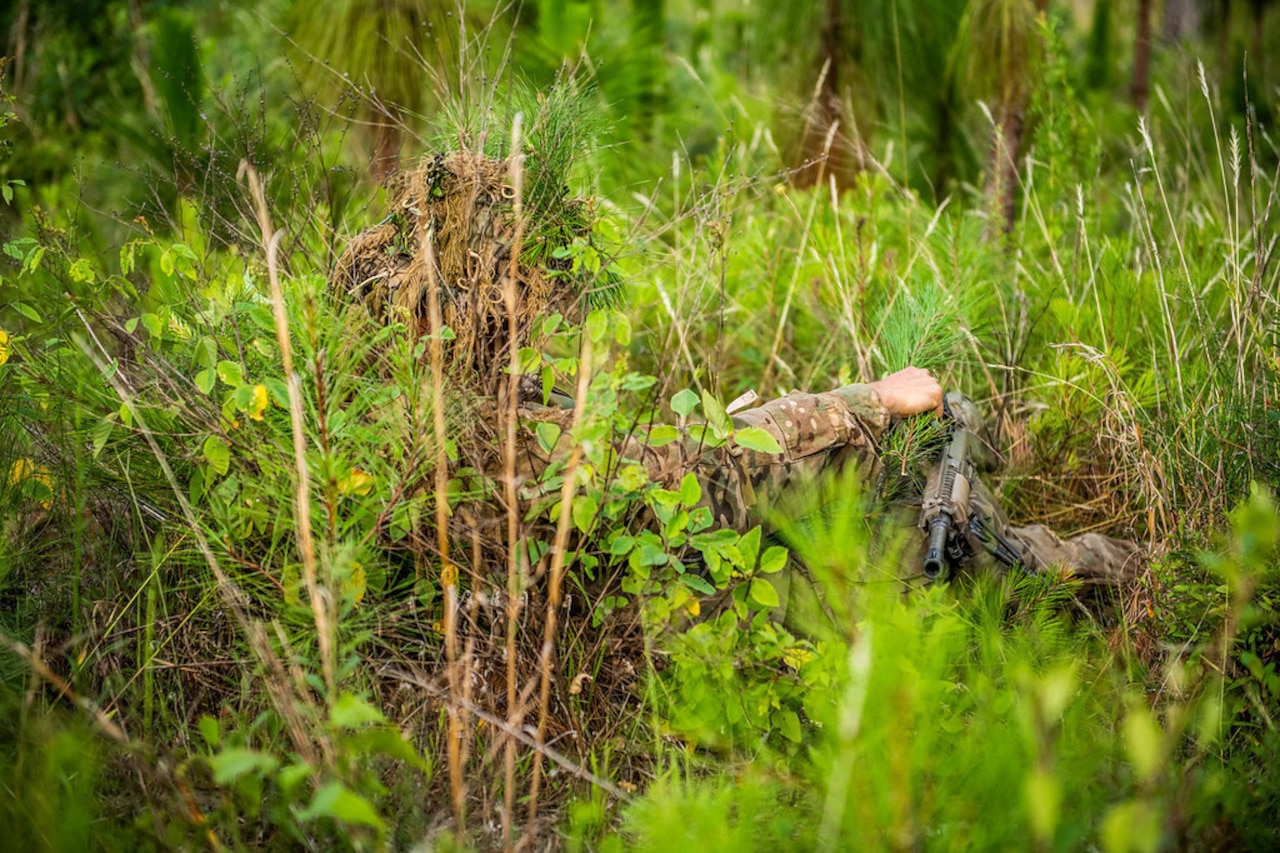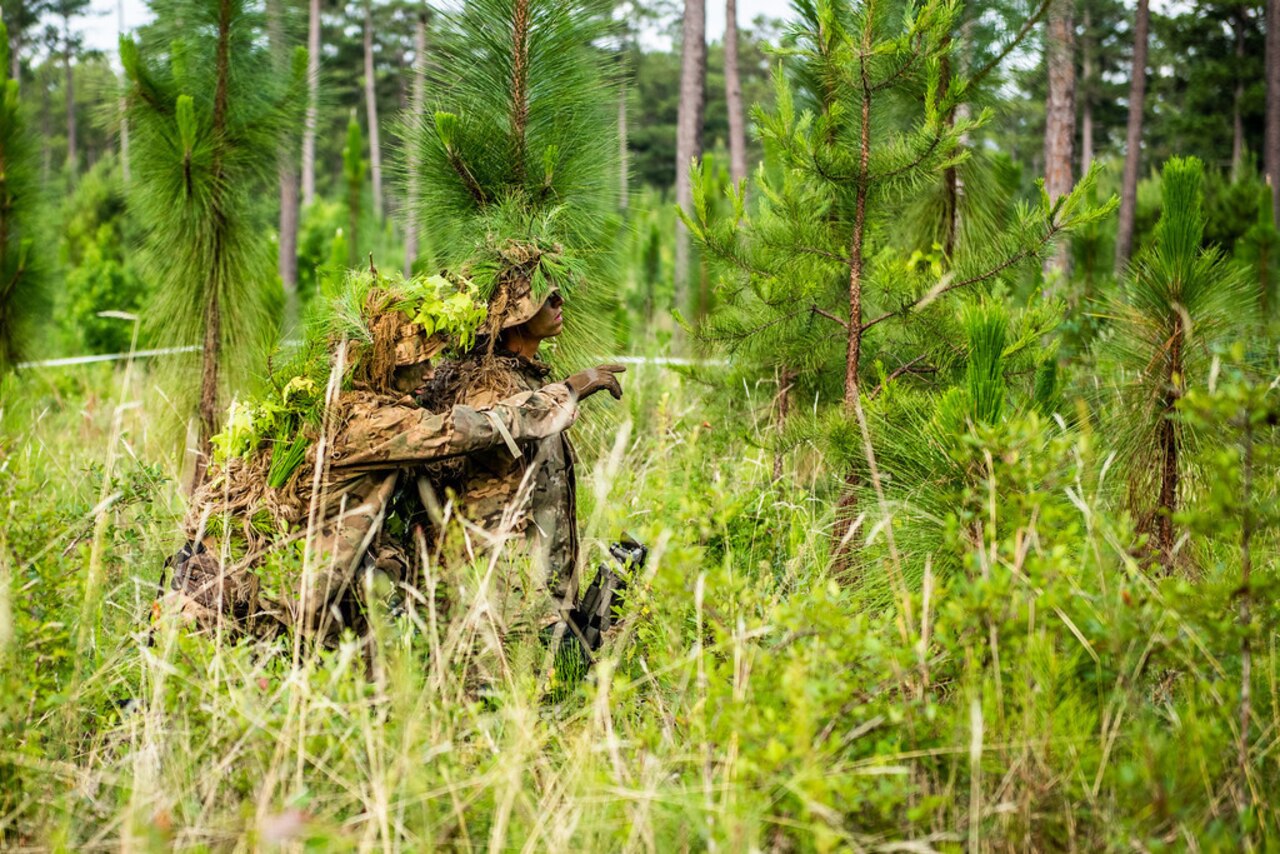One clear morning a few months ago, among the tall pines and broad sprawls of Fort Benning, Georgia, Army 1st Sgt. Kevin L. Sipes called someone he knows at the unit that trains new infantry soldiers.
It was late March, a time when the COVID-19 pandemic had brought restrictions on military travel. Many newly trained soldiers were on hold, waiting to move to their first units.

Sipes had an idea on how Fort Benning could help the whole Army by adding to the quality of its sniper units. Snipers are exceptionally good marksmen. They're specially trained in spotting and killing enemy targets, ideally on the first shot.
They're also trained to gather eyes-and-ears battlefield intelligence that can help commanders manage the fight. Fort Benning's Maneuver Center of Excellence, trains them through its seven-week U.S. Army Sniper Course, which is part of the U.S. Army Infantry School.
Snipes said he'd had the idea for about two years, long before the pandemic, but that it "kind of got put on the backburner."
"Then the COVID situation happens, and there were trainees that were here on Benning that weren't going anywhere for a while," Sipes said. "COVID-19 was sort of the catalyst to make it happen. It was sort of a no-brainer."
So, he said, he thought it was time for another try.
He called Army Sgt. Maj. Vincent M. Lewis, the operations sergeant major of the 198th Infantry Brigade. The brigade runs Infantry One-Station Unit Training, or OSUT, which trains soldiers to serve with the infantry. Lewis asked Sipes to stop by. Sipes was joined for the visit by Army Capt. Zach Lemke, the commander of Charlie Company, 1st Battalion, 29th Infantry Regiment, 199th Infantry Brigade. Sipes is the company's first sergeant. Charlie Company runs the Sniper Course.
"We popped in — 'Hey good to see you' — and got right to the point," Sipes said. He made the pitch to Lewis: "How about giving new Infantry OSUT soldiers the chance to volunteer for sniper training while they're still right here at Fort Benning?"
Sipes recalled Lewis' answer: "He said, 'Man, that sounds like an awesome idea. How do you plan to do it?' We talked about it for about 30, 45 minutes, just laying out the groundwork for what we were trying to accomplish," Sipes said.
Their idea, Sipes told Lewis, was to offer Infantry OSUT soldiers a chance to volunteer for a five-day tryout for the formal, seven-week sniper course. It would condense the course to key sniper basics. If they showed the right degree of mental sharpness and other aptitudes, they could go on to the Sniper Course. Then, if they made the grade in the Sniper Course, those recent OSUT graduates would arrive at their new units sniper-qualified, starting their Army service formally schooled in the best, state-of-the-art, sniper skills and methods.
Infantry units can train their own soldiers in-house to serve in their sniper squads, but they sometimes decide to send them to Fort Benning for formal sniper training. Taking some of the Army's newest soldiers and putting them through the Sniper Course — especially while they're already here — would be "a win-win," Sipes said.
"The units won't have to work as hard to train a soldier," he said. "They are ready to succeed on Day One. The only thing they lack is experience within the job, but that can be done through training. They've met the requirements. They know how to perform the specialized tasks. Now they just need the experience that comes from working in that organization."

Lewis took the proposal to brigade leaders, Sipes said, including Army Command Sgt. Maj. Ronnie E. Blount Jr., the brigade's command sergeant major, who in turn discussed it with Army Col. Dave Voorhies, the brigade's commander at the time.
"They came back and told us we were good to go," Sipes said. "It took about a week to 10 days to get the final approval on it. We created the schedule and sent it over to them."
The 198th helped with finding volunteers, Lemke said. The brigade's drill sergeants formed up the trainees, told them there was a chance to try out for the Sniper Course, and then asked for a show of hands. Among soldiers who had enlisted for the infantry, the chance to specialize as a sniper had warrior appeal. Hands went up, Lemke said.
"Obviously," Lemke added, "if you go to a basic training company full of privates and you asked, 'How many of you wanna go to sniper school?' every single one of 'em's gonna raise their hand, basically, I would assume."
To be considered, candidates would have to have attained the expert marksmanship score while in OSUT and have a score of at least 270 on the Army Physical Fitness Test. They'd also have to be in the Army's infantryman job category.
The brigade's drill sergeants sent forward a list of 20 soldiers who met the requirements, Lemke said.
"We got a list of names probably within the next 48 hours," Sipes said. "Then we went and picked them up and started to train them. So from flash to bang was probably 18 days or so."
The five-day-training is called the OSUT Soldier Sniper Assessment, Lemke said.
Charlie Company instructors teach the sniper-hopefuls how to spot targets, estimate the distance from themselves to the target, gauge the wind's movements so they can adjust for it in taking their shot and how to use a sniper's high-tech optical gear to trace the path of a shot. They're also taught the basics of stalking a target and are tested on their ability to fire the M110 sniper rifle using live ammunition.
But throughout the five days, the trainers also put a keen eye on whether a candidate has the cognitive ability to absorb the instruction, including its many technical fine points, and then apply it all properly, Sipes said.
Sipes added that he consulted a sports psychologist who works at Fort Benning for tips on how best to evaluate each candidate's ability to receive new information, learn how to apply it, apply it and then work to improve performance in the future.
Charlie Company ran the first assessment April 20-24 and a second May 11-15.
Ten OSUT soldiers went from the assessment into the Sniper Course's
Class 4, which ran April 27 to June 12 and started with 47 students.
Fourteen graduated, four of them OSUT soldiers who had gone through the
assessment. Two OSUT soldiers washed out, and the remaining four were
allowed another try in Class 5, which began May 18 and ends July 2,
Lemke said.
As the time approached to run another Sniper Assessment, the 198th sent Charlie Company another list of 20 candidates.
Class 5 started with 36 students and is now at 29, 11 of them OSUT graduates who had gone through the Assessment, Lemke said.
Lemke and Sipes said they think the results of Class 4 — with four out of 10 OSUT soldiers who were still virtual rookies to the Army making it to Sniper Course graduation — suggests the effort to seek sniper candidates from Infantry OSUT right at Fort Benning, has big potential.
"And that's only going to improve over time as we master how we assess and select them," Sipes said. "That was our first two attempts. We've taken notes on how to improve it, and it'll only get better."

But that wasn't the only encouraging sign, Lemke and Sipes said.
Of those four OSUT graduates who completed Class 4, two achieved special distinction: one received the Top Shot award for highest marksmanship scores in the class. Another took the Fieldcraft Award for top grades in stalking, target detection and range estimation, Lemke said.
"We have these soldiers here on post already," Sipes said, "that are brand new, hungry, they're physically fit. They're already in that training mindset."
"We can see the potential of these soldiers immediately out of OSUT," Lemke said. "We can measure it, train them, and then send them to the force ready. That's an extremely important thing for the Army."
"This allows us to take a lot of the training burden off of units," he continued. "I can send a soldier onto his next duty station already sniper-qualified, and that unit doesn't have to make any other investment and send them back to Fort Benning. They don't have to reinvent the wheel. He's coming straight out of OSUT, receiving that training and then arriving at your unit, ready to perform that duty."
If the program can continue to send out qualified snipers to the force, it helps to build the Army's sniper capability, he added.
(Franklin Fisher is assigned to Fort Benning.)






No comments:
Post a Comment